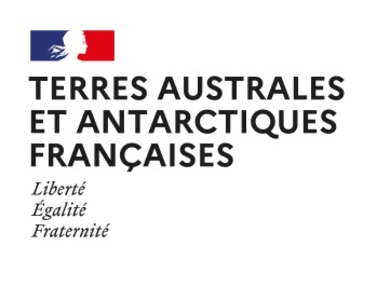French Southern and Antarctic Lands
The French Southern and Antarctic Lands (TAAF) are formed by the Crozet and Kerguelen archipelagos, the islands of Saint-Paul and Amsterdam, the Adélie Land (Antarctic) and the Scattered Islands. The latter include the tropical islands of Juan de Nova, Europa and Bassas da India, the Glorieuses archipelago in the Mozambique Channel, and Tromelin north of Reunion Island.
The TAAFs carry out sovereignty, scientific research support, biodiversity preservation and logistics missions in these territories. Charles Giusti, Prefect, senior administrator of the TAAFs, is both the representative of the State and head of the territory.
The TAAFs therefore extend over a large latitudinal gradient, from the 13th parallel south (with the Glorieuses Islands) to the 66th parallel south (with the Dumont D'Urville base, in the Adélie land). All of this land provides an exclusive economic zone (EEZ) of more than 2.2 million km², which contributes to giving France the second largest maritime right of way in the world. The largest property on the UNESCO World Heritage List, the French Southern Lands National Nature Reserve is also one of the largest marine protected areas in the world.
As part of their multiple partnerships with the main French research players, notably with the French Polar Institute (IPEV), the French Institute for Research and Exploitation of the Sea (Ifremer), the French Office for Biodiversity (OFB), the National Museum of Natural History (MNHN), the National Centre for Scientific Research (CNRS-Inee), the University of Réunion, the University Training and Research Centre of Mayotte (CUFR Mayotte), the Research and Development Institute (IRD), the National Centre for Space Studies (CNES), the Atomic Energy and Alternative Energies Commission (CEA), the TAAF welcomed and provided support in 2020 to 363 scientists involved in 69 research programmes.
In the Adélie region, as in the French Southern Territories, national and international scientific programmes are coordinated by IPEV to study the evolution of biodiversity and climate. The international atmospheric reference station in Amsterdam (IPCC, NASA), for example, gives France a strategic place in the global atmospheric monitoring network (World Meteorological Organisation). Ifremer coordinates oceanographic campaigns in this part of the country.
In the Scattered Islands, it is the TAAF administration, alongside members of an inter-agency research consortium that coordinates the development of research programmes.
With the support of the INTERREG V Indian Ocean 2014-2020 programme, the TAAF and Ifremer have joined forces within the framework of the IOT project to continue the development of innovative tags for monitoring juvenile marine turtles and the deployment of the network of receiving stations to Europa, initiated by the pIOT* pilot project. Indeed, the beaches of the Scattered Islands are one of the most important nesting sites in the south-western Indian Ocean for marine turtles (mainly green turtles and hawksbill turtles).
Within the framework of the IOT project, the TAAFs provide logistical and human support in the implementation of the project on their territory and a reflection is also underway to strengthen this system on other sites in the Scattered Islands. However, the synergy between these two partners goes beyond this, it extends to other collaborative projects on the sustainable management of the natural heritage of the Scattered Islands.
TAAFs in a few figures (2020) :
- 2.2 million km2 of EEZs
- 129,000 km covered by the ships Marion Dufresne and L'Astrolabe
- 3,000 tonnes of materials transported to the territories
- 30,000 m2 of maintained infrastructure
- 69 research programmes hosted and supported
- 250 species in the French Southern Lands National Nature Reserve
- 4,646 species, 80% of which are marine species in the Scattered Islands
*Pilot project for Indian Ocean sea Turtles (pIOT):
Le pIOT project, started at the end of 2018 as part of the multidisciplinary research consortium "îles Eparses 2017-2020" and led by Ifremer's Indian Ocean delegation, made it possible to test the first prototype of an innovative tag and receiving stations in a natural environment, on the island of Europa, the premise of the IOT project.

